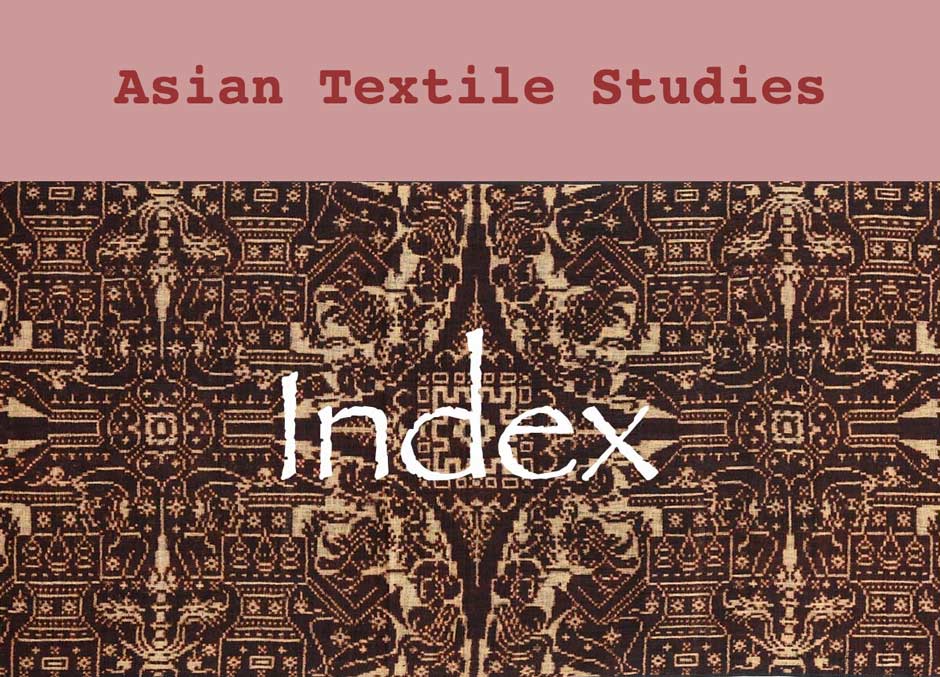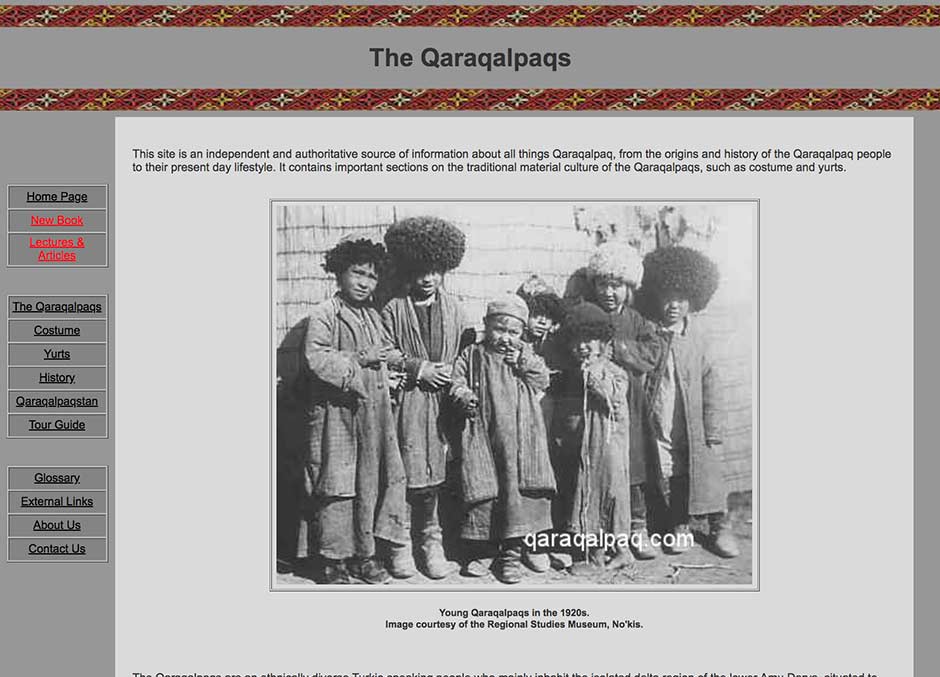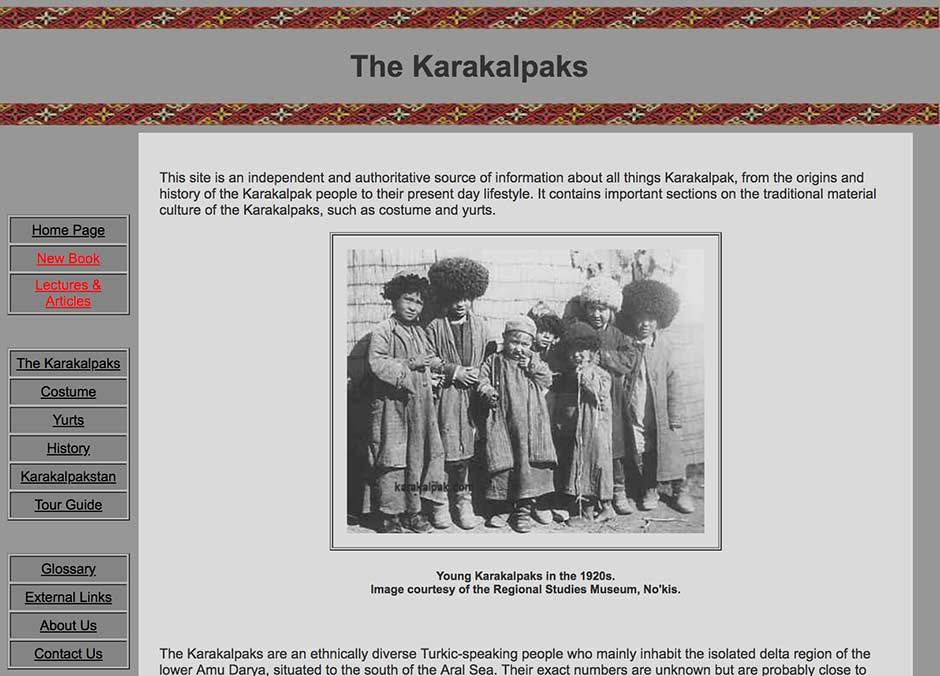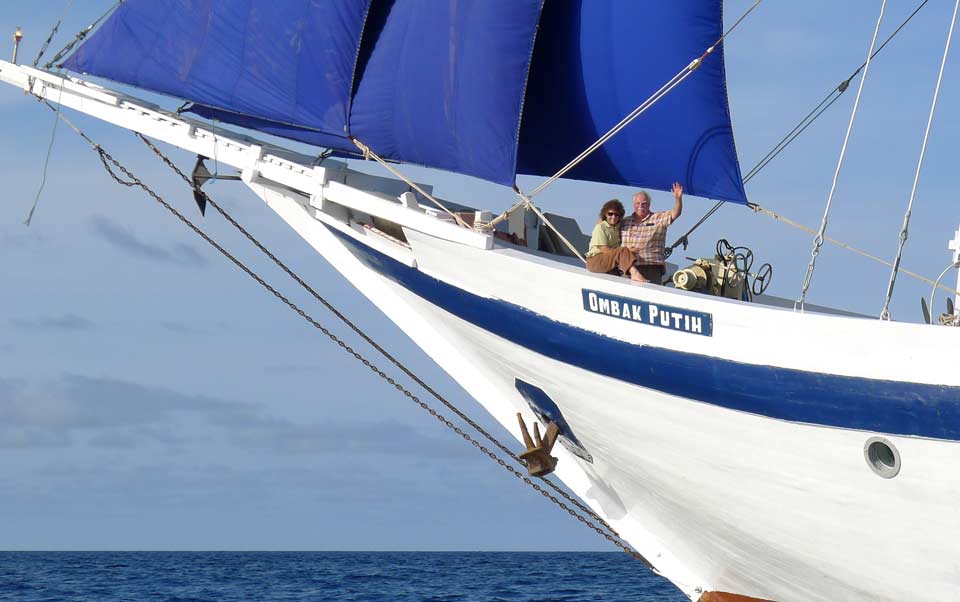Asian Textile Studies
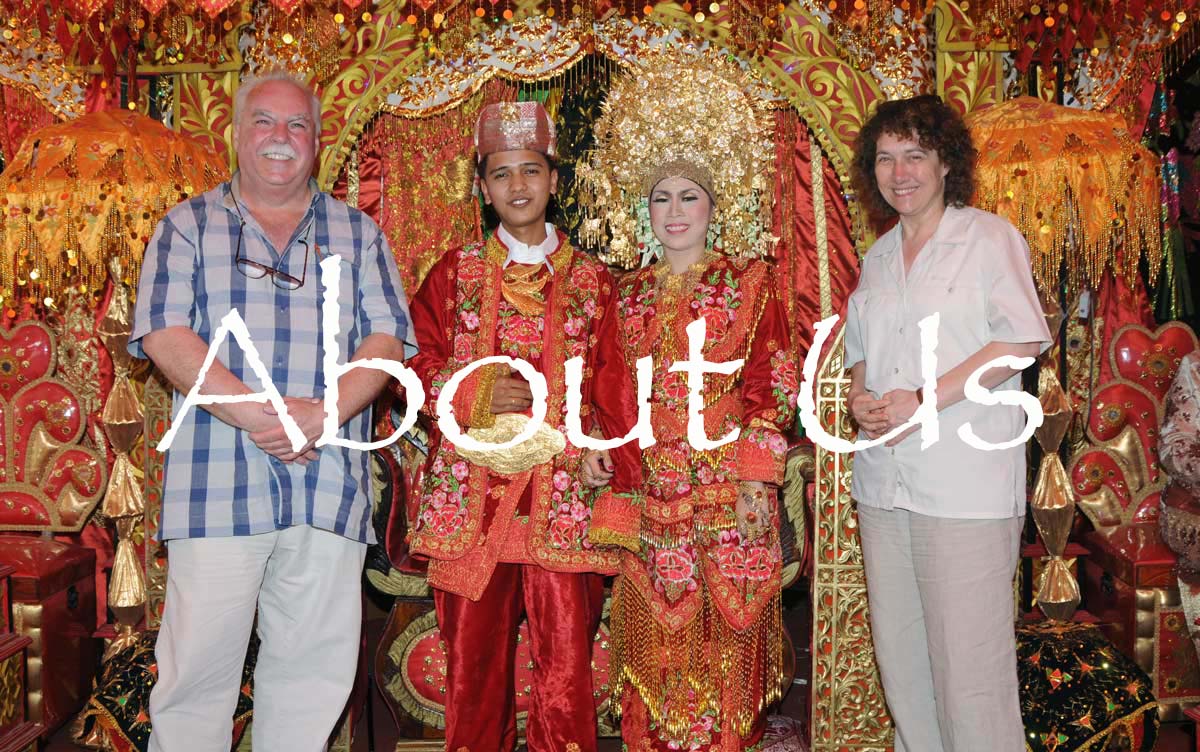
We are David and Sue Richardson
We are a pair of Asian textile fanatics who were both born in England - David in the county of Kent in the southeast, and Sue in County Durham in the northeast. David was formerly a Main Board Director of a British pharmaceutical conglomerate, where he headed its high-tech scientific instruments division, responsible for 20 factories worldwide. Sue was a Human Resources Manager for a national British department store chain that had 68 stores across the UK. David received his doctorate in quantum physics from Cambridge University. Sue received her bachelors degree in English Literature from Sheffield University.
We first met in 1987 and soon began to share an interest in Oriental carpets and Asian textiles. Over time this passion has taken over our lives and we now spend all of our available time exploring, studying and writing about textiles from Asia. We both serve on the committee of the Oxford Asian Textile Group, which is closely associated with the Ashmolean and Pitt Rivers Museums, parts of the University of Oxford. Sue is a novice hand-loom weaver.
Our Interest in Asian Textiles
Over the past 30 years we have travelled to every part of the Orient, from Turkey to New Guinea, primarily looking at weaving, textiles and rugs. We first visited Indonesia before we were married in 1989. Shortly afterwards, David began working with the Ministry of Education in Jakarta on two projects to re-equip the university laboratories throughout the islands of western and then eastern Indonesia. This gave us our first chance to visit the many varied ikat-weaving islands of Nusa Tenggara.
Since then we have travelled to Indonesia regularly and have now visited almost every single part of the archipelago - Sumatra, Bangka, Belitung, Kalimantan, Sulawesi, Java, Bali, Lombok, Sumbawa, Komodo and Rinca, Flores, Adonara, Solor, Lembata, Pantar, Alor, Wetar, Reong, Romang, Kittal, Kisar, Damar, Leti, Babar, Tanimbar, the Kei Islands, Aru, Gam, West Papua, Papua, Misool, Waigeo, Wofoh, Penamu, Pef, Halmahera, Morotai, Ternate, Tidore, Bacan, Sayafi, Yu, Wayag, Kayoa, Obi, Obilatu, Sanana, Mangoli, Sulu, Buru, Ambon, Manipa, Seram, Teun, Nila, Serua, Manuk, Banda, Tioare, Uram, Sumba, Savu, Raijua, Roti, and Timor.
At the same time we have also had numerous textile expeditions to many states across India, as well as to Sri Lanka, Burma, Cambodia, Laos, Thailand, Vietnam, Mainland Malaysia and Sarawak, and Brunei.
In 1996 we began to explore Central Asia, becoming intrigued by the history and material culture of remote Qaraqalpaqstan and Khorezm, both located just south of the Aral Sea in far western Uzbekistan. We spent at least a month in the region every year, also exploring Turkmenistan, Kazakhstan and Kyrgyzstan. We initially published the results of our research in two websites - www.karakalpak.com and www.qaraqalpaq.com. Our research culminated in the production of our book - Qaraqalpaqs of the Aral Delta - which was published by Prestel in 2012 and remains the main source of information on the Qaraqalpaqs in the English language.
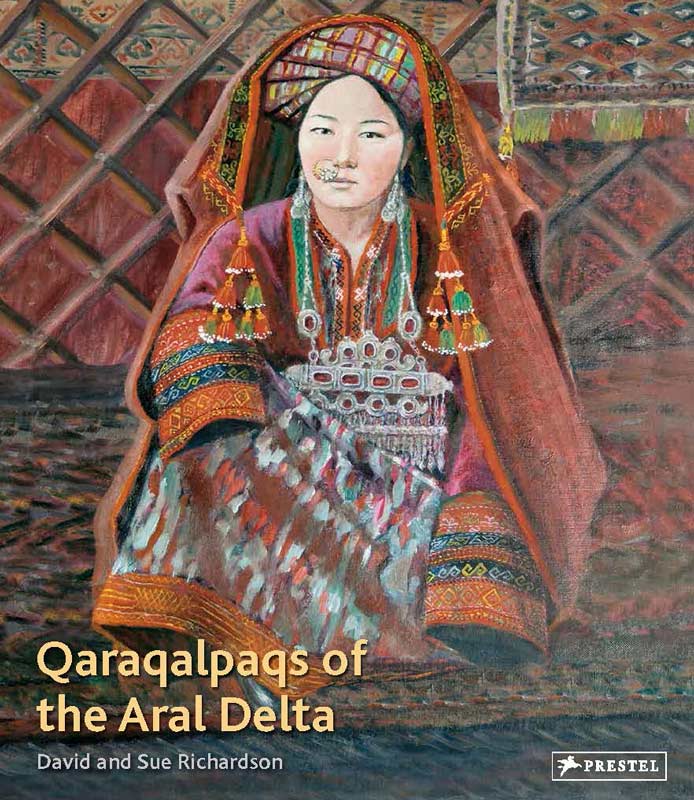
In the past decade we have renewed our focus on Indonesia, with one six week trip around the islands of north Maluku and another down the east coast of Sumatra. In 2013 the owners of SeaTrek in Bali invited us to design and lead an 'expert led' textile tour of the ikat-weaving Lesser Sunda Islands, using a traditional Bugis-built schooner - the beautiful Ombak Putih. After a four-week research trip later that year we led our first textile tour in May 2014, which was an overwhelming success. Our subsequent cruises have gone from strength to strength and our eighth is scheduled for May 2021.
Our Approach to Textile Scholarship
Many books and articles have been published about the textiles of Southeast Asia and Indonesia, some serious but the majority primarily illustrative. There are of course many exceptions but sadly the quality of most of the literature is well below standard and is littered with misunderstandings. Few publications answer the detailed questions that we ask ourselves.
Because we have discovered so many things published about Asian textiles to be erroneous, we have become increasingly sceptical about what we read. Now we believe nothing unless we have seen it with our very own eyes.
A true appreciation of tribal textiles requires an understanding of the history and culture of the people who made and used them, as well as a technical comprehension of the botany and chemistry of fibres and natural dyes, the numerous techniques of textile production and the social context in which such textiles were used. We want to pull together the information that has already been published, much of it fragmented, and combine it with our own first-hand findings in the region. While libraries and museums are a valuable starting source for information, a true comprehension can only be gained by spending time in the field. Nothing is more important than talking to the real experts - the spinners, dyers, ikat-binders and weavers who still make and use these textiles today.
We have created this new website as an initial outlet for our own studies into the textiles of the Lesser Sunda Islands, and more widely those of Indonesia and mainland Southeast Asia. Our ultimate objective is to understand why the textiles of specific regions, islands or ethnic groups look the way they do, and were used in the way they were. As this website develops we hope that it will become a useful resource to others with an interest in the wonderful textiles of this extraordinary region.
Our Collecting Philosophy
When we began collecting, we naively acquired our textiles from dealers and fairs, an extremely easy way to start a collection. Over time this became less and less satisfying because there was no way of establishing exactly where or when these textiles were made, or how they had been used in the past. Without knowing when and where textiles are made it is impossible to accurately study how they have changed over time, a key objective for the textile historian.
Today we recognise the overriding importance of provenance. You can only know what a textile is called, when and where it was made, the identity of the maker, their age and the clan that they belonged to, and how their cloth was subsequently used by collecting in the field - by acquiring it from a family that has owned it for many years and knows its full history. This is not only a much more exciting and adventurous way to collect, but is the only way to truly understand the context within which these textiles were made and used.
Because of this approach, a high proportion of the Richardson Collection has a detailed provenance.
Of course many museums and private collectors continue to acquire textiles through dealers, auction houses and the internet. Obviously it is possible to obtain very beautiful textiles in this way and we are sometimes still tempted do so ourselves. However this is shopping, not serious collecting. Many items obtained in this way tend to be identified by comparing them with similar examples illustrated in books or displayed in museums, not realising that in many parts of Asia, especially Indonesia, the names of textiles change from village to village. Basically if you do not precisely know in which village a textile was woven, you cannot assign it a name. This is just one of the reasons why the literature is so inadequate.
A few rash collectors even assign dates to their textiles, despite lacking factual information about when they were made. In doing so they create a worthless house of cards of little value to the textile scholar. Other than establishing that a textile cannot have been made before 1860 if it contains an aniline dye, it remains impossible to date a textile by looking at it, even under the microscope.
The Richardson Collection includes examples of textiles, baskets and other artifacts from much of the Asian region, with the exclusion of China. Our Central Asian collection contains the most comprehensive range of Qaraqalpaq costumes and yurt weavings outside of the Autonomous Republic of Qaraqalpaqstan. Our Indonesian collection covers almost all of the weaving islands of the archipelago, and is especially comprehensive for Sumatra and eastern Indonesia. We also have collections from the Himalayas, India, Sri Lanka, Sarawak, Burma, Thailand, Laos and Cambodia.
Every one of the artifacts in the Richardson Collection has been photographed, comprehensively catalogued and assigned a storage location. The maintainance and management of our collection takes up a considerable proportion of our working year.
Because we have retained a long-term commitment to acquiring textiles at source and carefully documenting their history, the Richardson Collection offers a valuable resource for other serious scholars of Asian textiles.
Publications
Richardson, David, 2022. The heirloom textiles of southwest Solor in eastern Indonesia, Textiles Asia, vol. 13, issue 4, pp. 3-14, New York.
Richardson, David, 2022. Baandha – the neglected ikats of Odisha, Northeast India, Asian Textiles, Journal of the Oxford Asian Textile Group, no. 81, Spring 2022 Edition, pp. 3-10, Oxford.
Richardson, Susan, 2022. Shekpen, Selvedge Magazine, issue 102, pp. 68-69, London.
Richardson, David, 2021. It’s Pants! The Fortuitous Invention of Trousers, Oxford Asian Textile Group Lockdown Newsletter, issue 4, pp. 7-12, Oxford Asian Textile Group, Oxford.
Richardson, David, 2021. Book review: Travellers in the Great Steppe: From the Papal Envoys to the Russian Revolution, Asian Textiles, Journal of the Oxford Asian Textile Group, Spring 2021 Edition, no. 78, pp. 25-28, Oxford.
Richardson, David and Sue, 2020. A Khanty Festival Dress in the British Museum, Oxford Asian Textile Group Lockdown Newsletter, issue 3, pp. 7-9, Oxford Asian Textile Group, Oxford.
Richardson, David and Sue, 2020. Honoured Guests of the Chief of Nagaland, Oxford Asian Textile Group Lockdown Newsletter, issue 1, pp. 14-17, Oxford Asian Textile Group, Oxford.
Richardson, David and Sue, 2020. A tale of two volcanoes: the bridewealth sarongs of Kédang on the island of Lembata, eastern Indonesia, Asian Textiles, Journal of the Oxford Asian Textile Group, no. 75, Spring 2020 Edition, pp. 6-15, Oxford.
Richardson, David and Sue, 2019. Lembata Island - Island of the Long Drop Spindle , Wild Fibers, vol. 16, issue 1, pp. 56-70
Richardson, David and Sue, 2018. Pahikung – The Pinnacle of Supplementary Warp, Textiles Asia Journal, vol. 9, issue 3, pp. 16-24, Hong Kong.
Richardson, David and Sue, 2018. Our favourite … dye pot, Asian Textiles, Journal of the Oxford Asian Textile Group, Summer 2018 Edition, no. 70, pp. 25-28, Oxford.
Richardson, David and Sue, 2017. The Qaraqalpaq yurt and its decoration, Asian Textiles, Journal of the Oxford Asian Textile Group, February 2017 Edition, no. 66, pp. 3-11, Oxford.
Richardson, David and Sue, and Hambuwali, Frederik, 2016. Preparing to Meet the Ancestors, HALI, vol. 187, pp. 74-77, London.
Richardson, David and Sue, 2016. The Funeral of a King, Asian Textiles, Journal of the Oxford Asian Textile Group, no. 63, pp. 15-20, Oxford.
Richardson, David and Sue, 2013. The Qaraqalpaqs and the Aral Sea Crisis, Open Central Asia Magazine, Spring Edition 2013.
Richardson, David and Sue, 2012. Outwitting the Evil Eye: The Qaraqalpaq Kiymeshek, HALI, vol. 173, pp. 54-59, London.
Richardson, David and Sue, 2012. The Symbolism of Livestock Horns among the Qaraqalpaqs, Asian Textiles, Journal of the Oxford Asian Textile Group, no. 52, Summer 2012 Edition, Oxford.
Richardson, David and Sue, 2012. The Influence of Tribal Conflict, the Great Game, and Trade on Qaraqalpaq Costume, Textile Society of America Biennial Symposium Proceedings, September 2012, Washington D.C.
Richardson, David and Sue, 2012. The Qaraqalpaq Qızıl Kiymeshek, Textiles Asia, June 2012 Edition, Hong Kong.
Richardson, David and Sue, 2012. Qaraqalpaqs of the Aral Delta, Prestel, Munich.
Richardson, David and Sue, 2010. Protect and Defend, Hand/Eye Magazine, Issue 03, Spring/Summer 2010.
Richardson, David and Sue, 2009. The Kiymeshek of the Karakalpaks, Asian Textiles, Journal of the Oxford Asian Textile Group, no. 44, October 2009, Oxford.
Richardson, David and Sue, 2009. Textile Traditions of Sumatra – Part 2, Asian Textiles, Journal of the Oxford Asian Textile Group, no. 42, pp. 15-19, February 2009, Oxford.
Richardson, David and Sue, 2008. Textile Traditions of Sumatra – Part 1, Asian Textiles, Journal of the Oxford Asian Textile Group, no. 41, pp. 22-26, October 2008, Oxford.
Richardson, David and Sue, 2008. Unravelling the mysteries of the Karakalpaks, Asian Textiles, Journal of the Oxford Asian Textile Group, no. 39, pp. 10-11, February 2008.
Richardson, David and Sue, 2008. Review: The E M Bakwin Collection of Indonesian & Malaysian Textiles, Asian Textiles, Journal of the Oxford Asian Textile Group, no. 39, pp. 26-27, February 2008.
Richardson, David and Sue, 2005. Textiles from Easternmost Indonesia, Asian Textiles, Journal of the Oxford Asian Textile Group, no. 32, pp. 7-12, October 2005, Oxford.
Richardson, David and Sue, 2005. The Karakalpaks - The Forgotten Tribe of Central Asia, HALI, vol. 142, September 2005, London.
Websites
Asian Textile Studies
The Qaraqalpaqs
The Karakalpaks
Our Textile Tour
We are textile scholars not tour leaders. Nonetheless once a year we lead a small group of adventurous textile enthusiasts through the Lesser Sunda Islands (the small islands of eastern Indonesia) aboard a traditional Indonesian phinisi. If you want to enjoy the trip of a lifetime and fully understand the weaving culture of one of the most beautiful regions of the planet, please come and join us.
The only way to explore the islands of Nusa Tenggara Timur - the 'Eastern Southeast Islands' of Indonesia
Photo Gallery
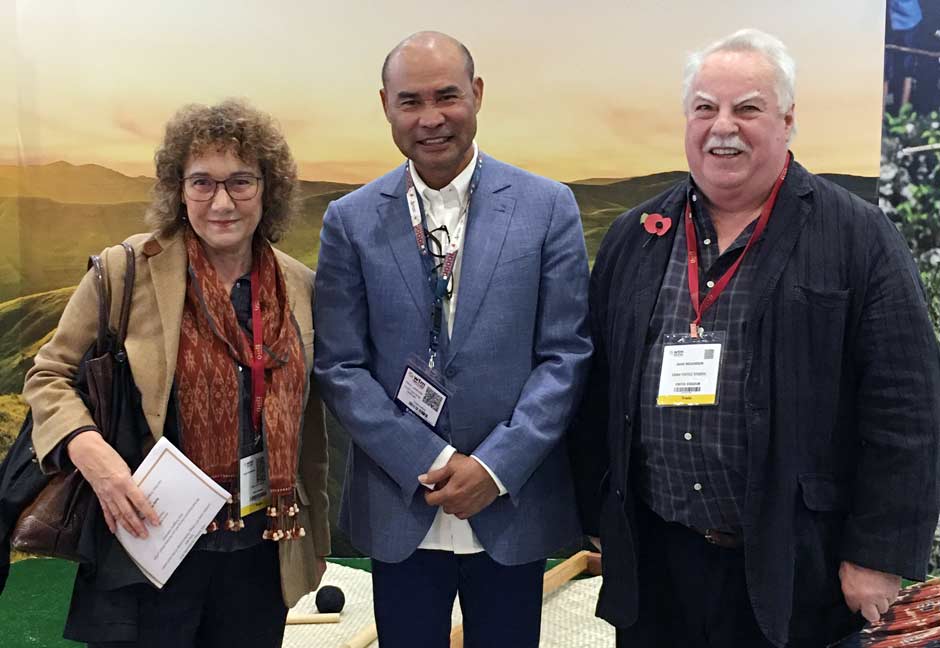
With His Excellency Viktor Bungtilu Laiskodat, Governor of the Province of Nusa Tenggara Timur, Republic of Indonesia
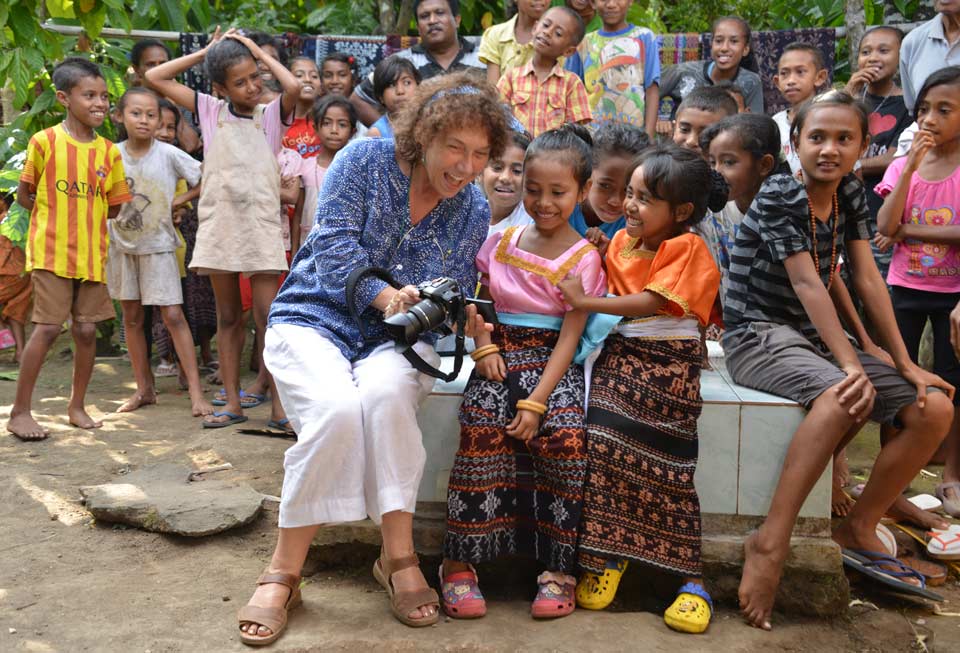
Sue sharing her photographs at a village in the Krowé region of Sikka Regency, Flores Island, Indonesia
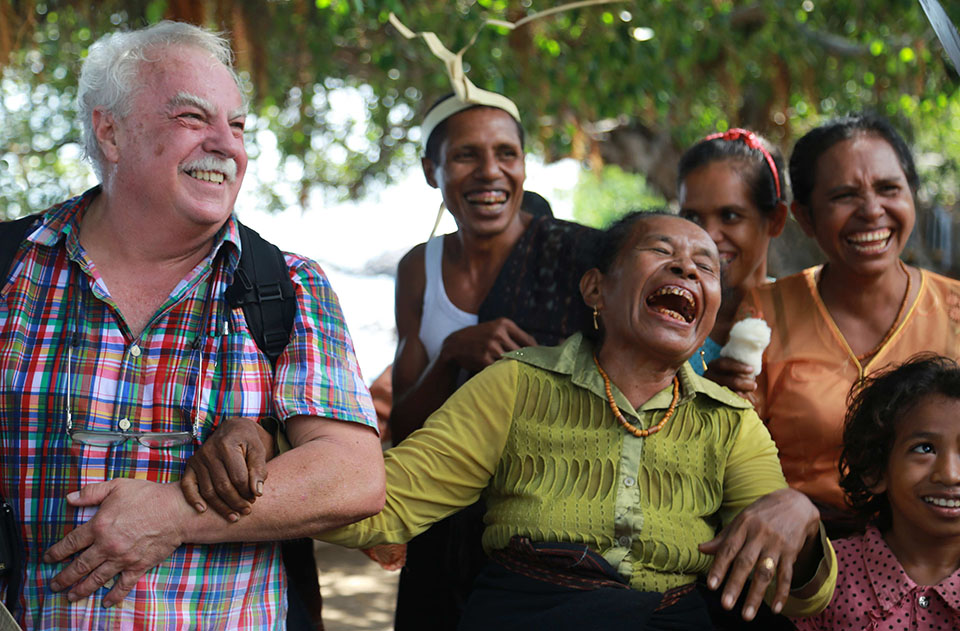
David joking with villagers on Ilé Apé, Lembata Island, Indonesia
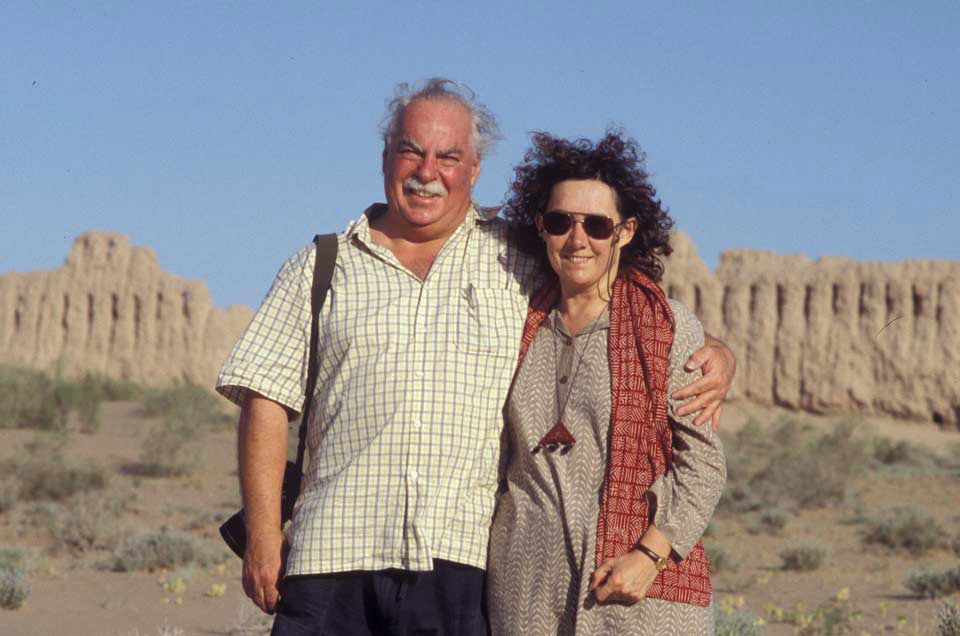
David and Sue by the ruins of Janbas Qala, an early fourth-century BC Khorezmian frontier fortress, now lost in the deserts of southern Qaraqalpaqstan
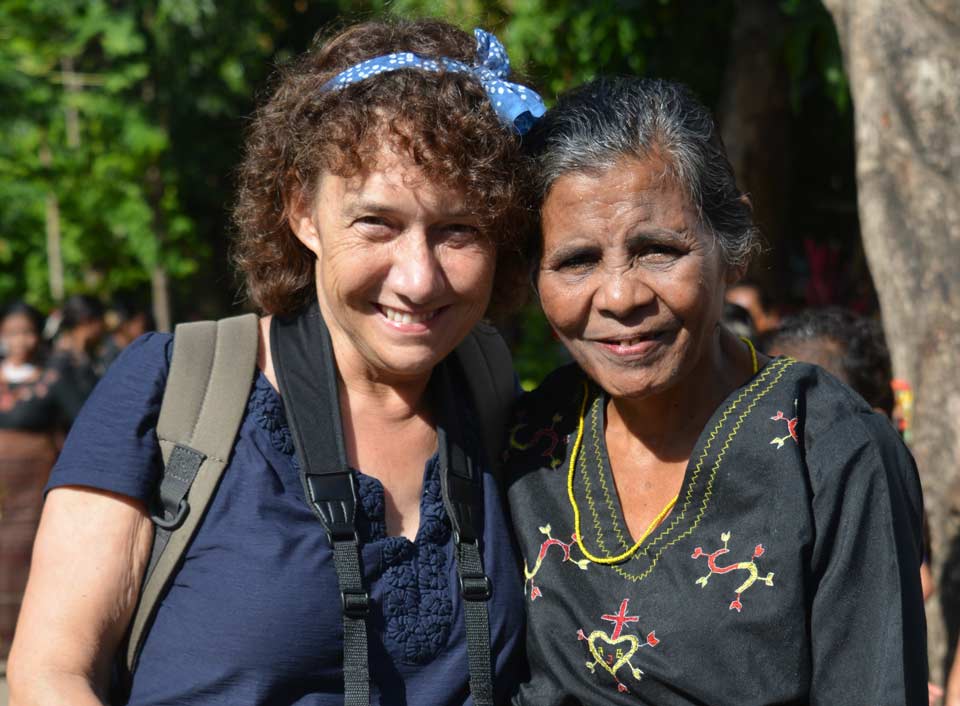
Sue with Antonia Bui Hera, head of the Lamaholot weavers in Bama, East Flores Regency, Flores Island, Indonesia
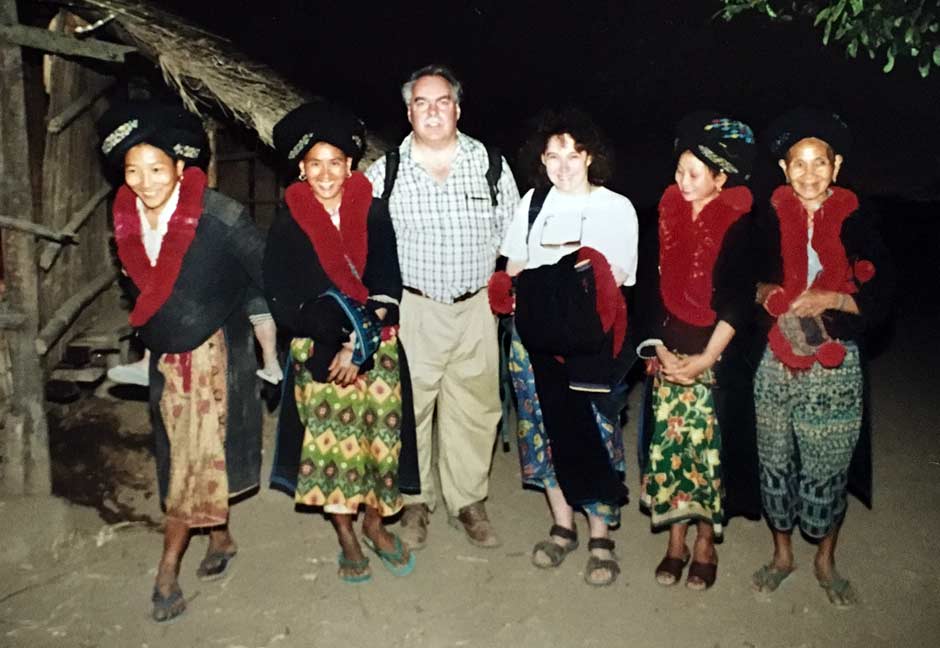
David and Sue with Yao weavers at the small hamlet of Soi Lek, just south of the Chinese border in Luang Nam Tha Province, northern Laos
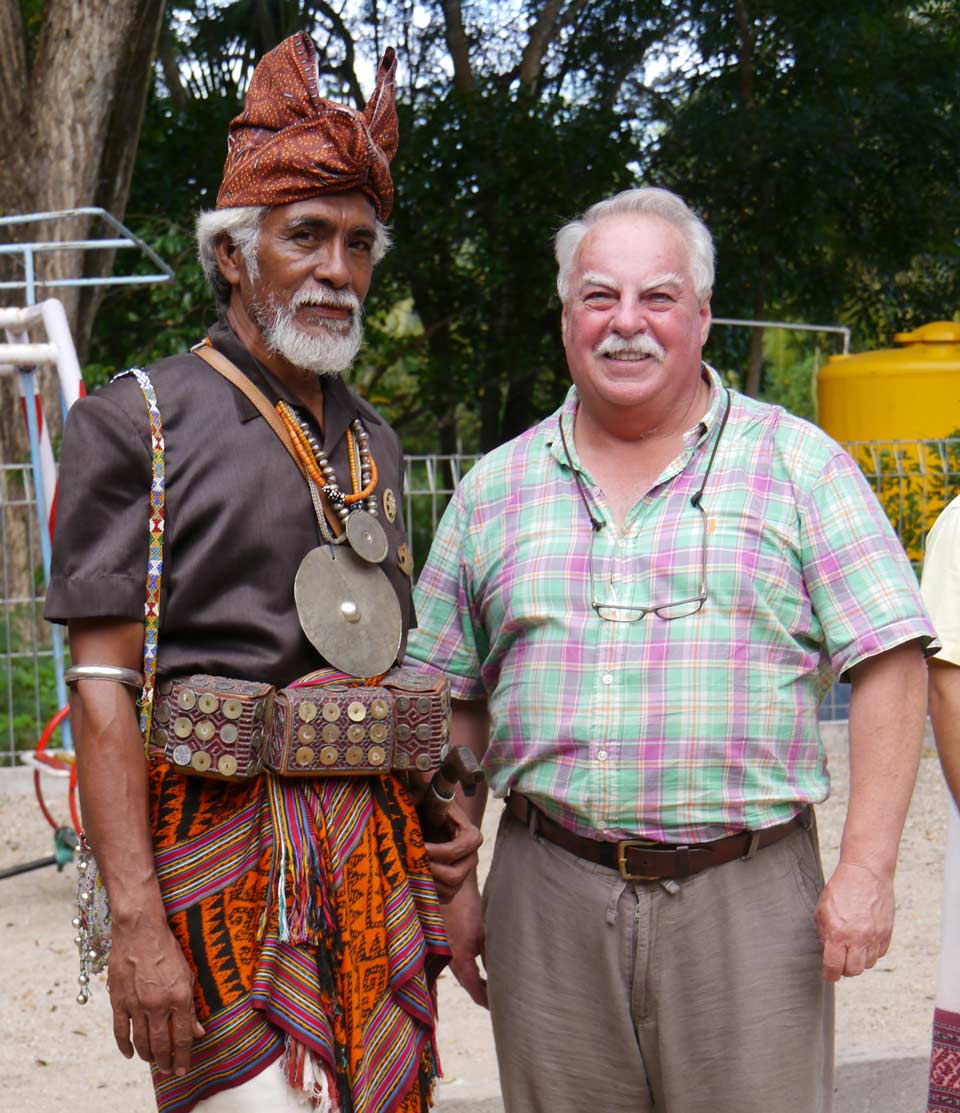
David with Usif Robert Koroh, King of the Amarasi, Baun, West Timor, Indonesia
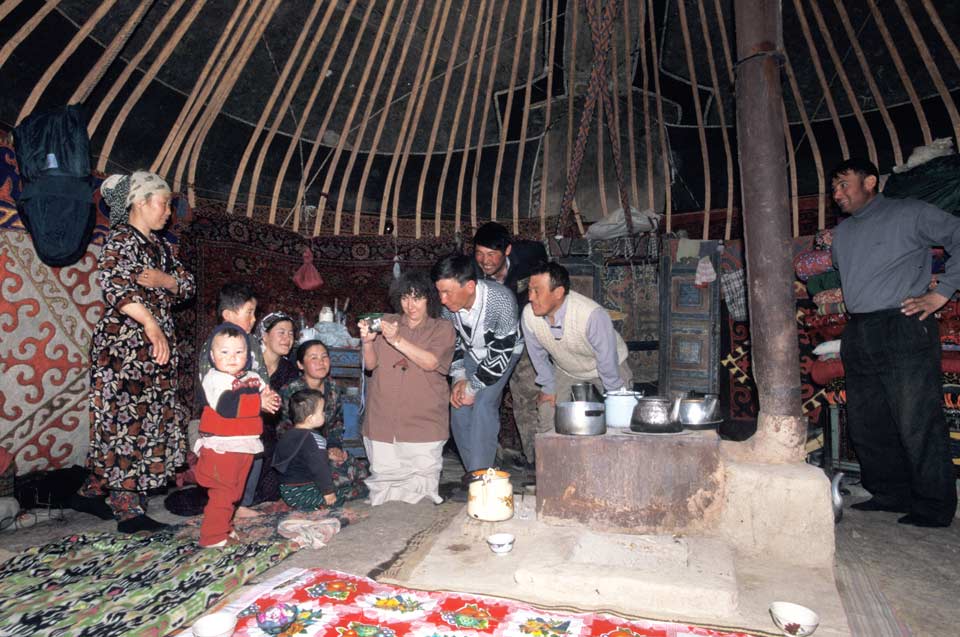
Visiting a nomadic Qazaq family of sheep breeders for lunch in the Qizil Qum desert
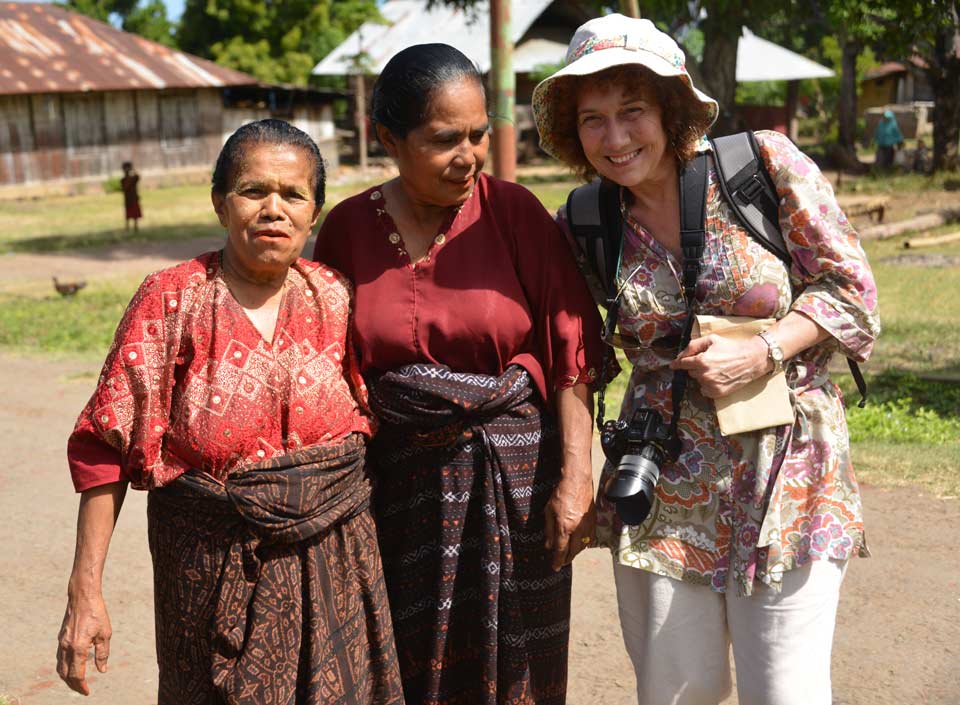
Sue with two of the weavers in the important Lio weaving village of Nggela, Ende Regency, Flores Island, Indonesia
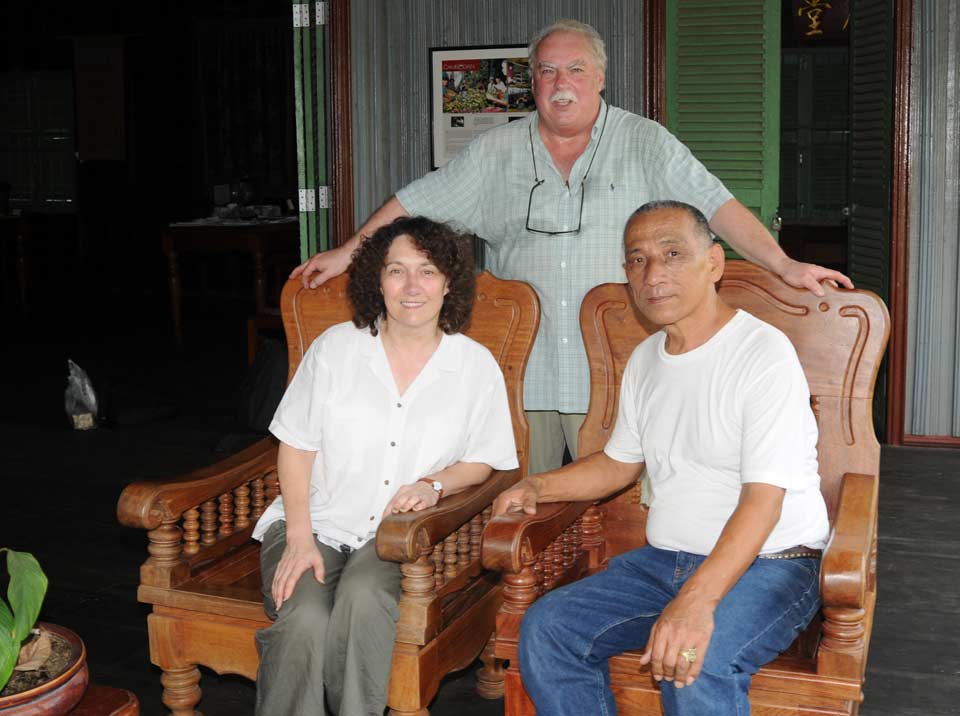
With the late Kikuo Morimoto-san, founder of the Institute of Khmer Traditional Textiles (IKTT), at his home in the forest close to Siem Reap, Cambodia
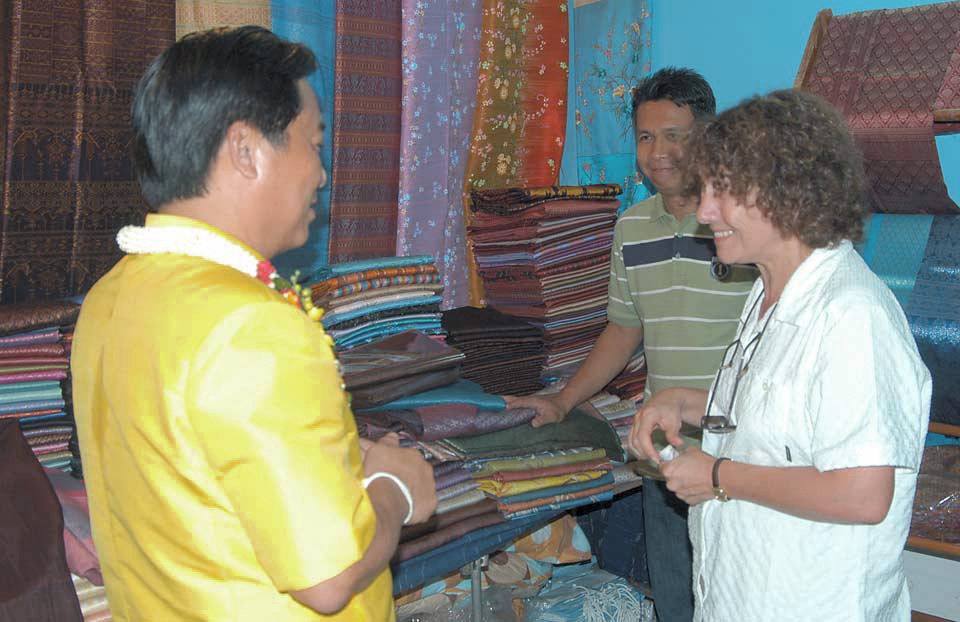
Sue talking to the Thai Minister of Culture at the Silk Festival, Khon Kaen, Khon Kaen Province, Thailand
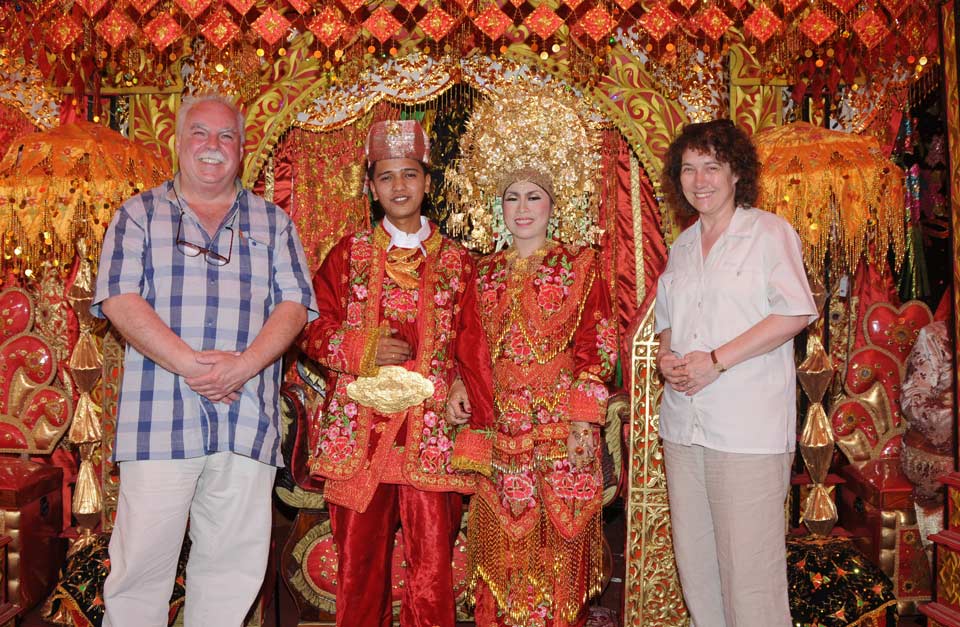
Guests at a Minangkabau wedding in the Padang region of West Sumatra, Indonesia
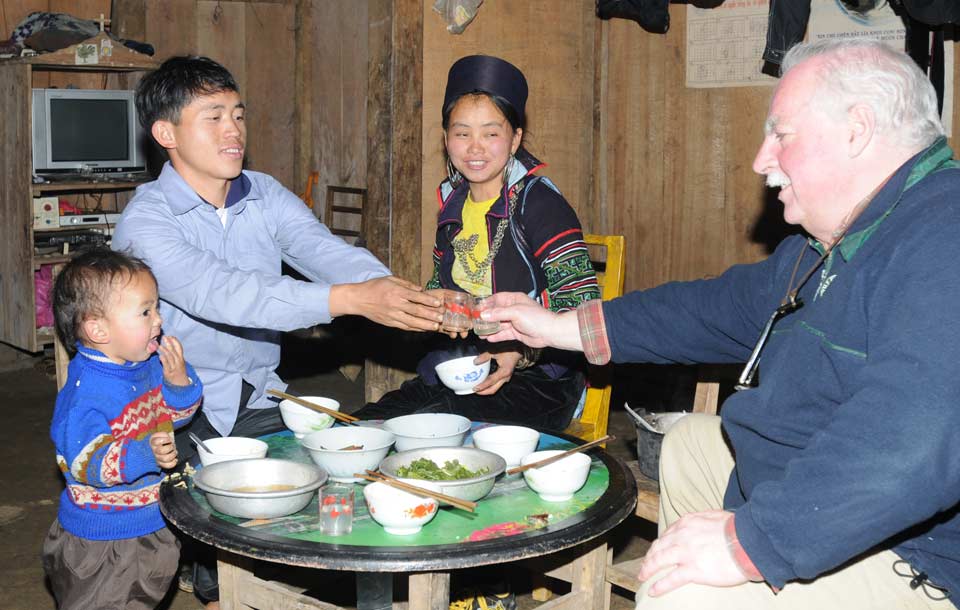
A shot of firewater over lunch with our Black Hmong guide, Tee, and her husband in their hill-top house in the highlands of Vietnam
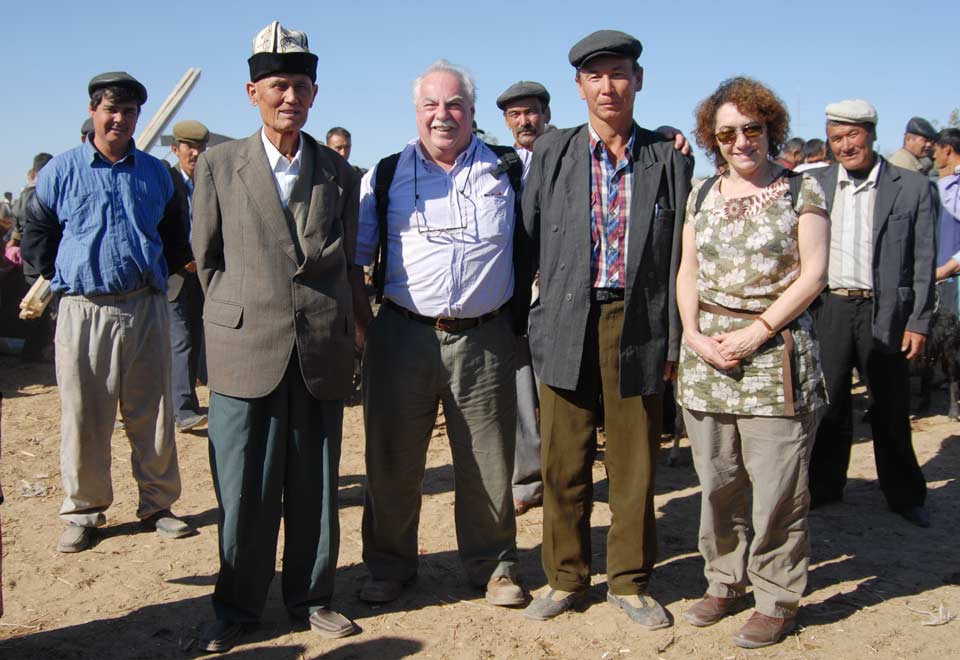
With a local vet and farmers at the Taxta Ko'pir Sunday livestock market in northern Qaraqalpaqstan
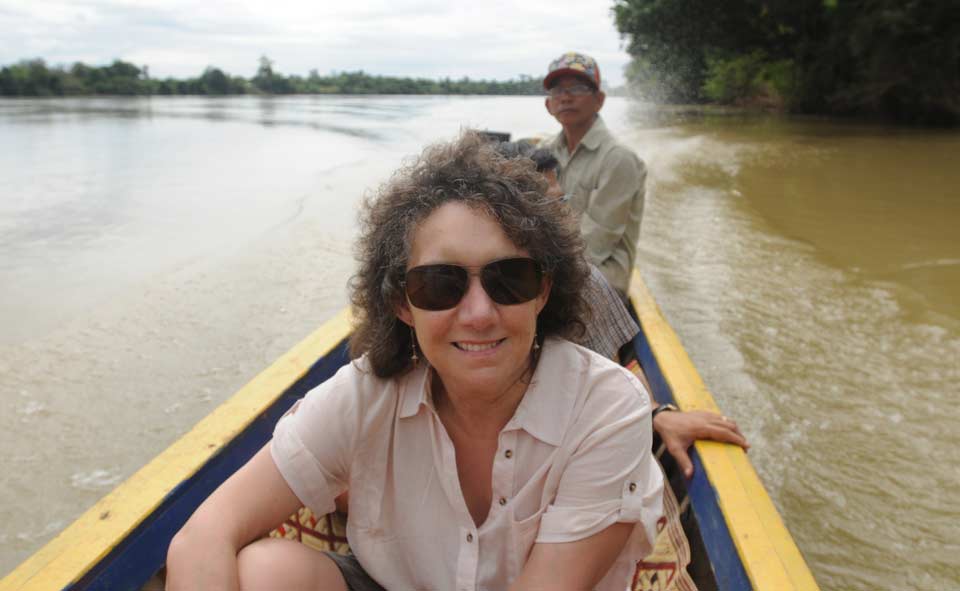
Off to explore remote weaving villages in Rattanakiri, northern Cambodia
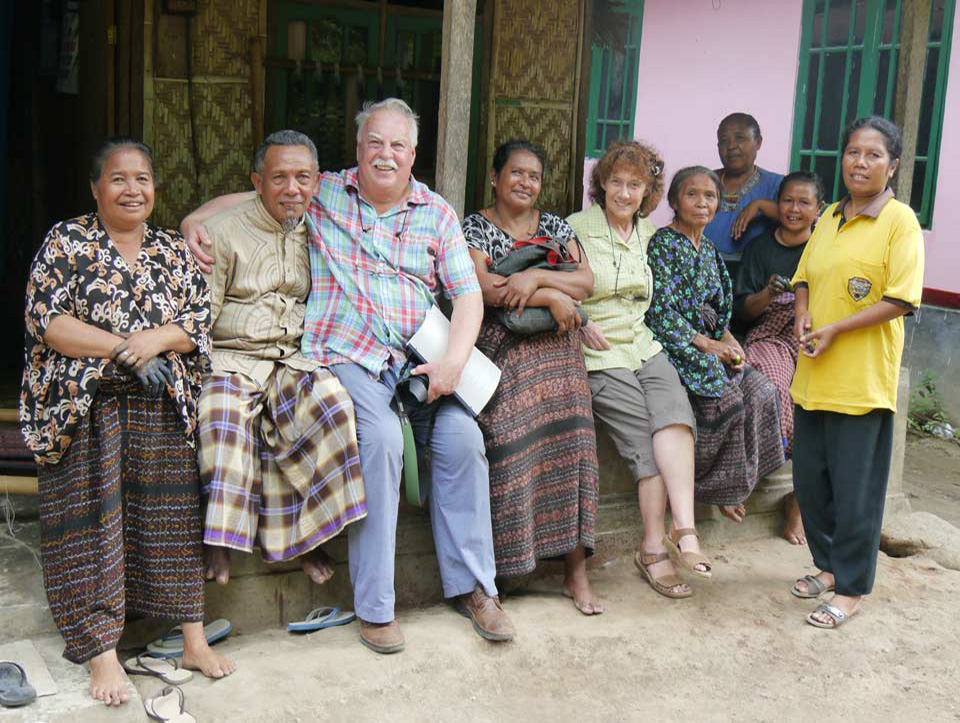
With Ita Yusef and other members of the Bou Sama Sama weaving group at Onelako, Ndona region of Ende Regency, Flores Island, Indonesia
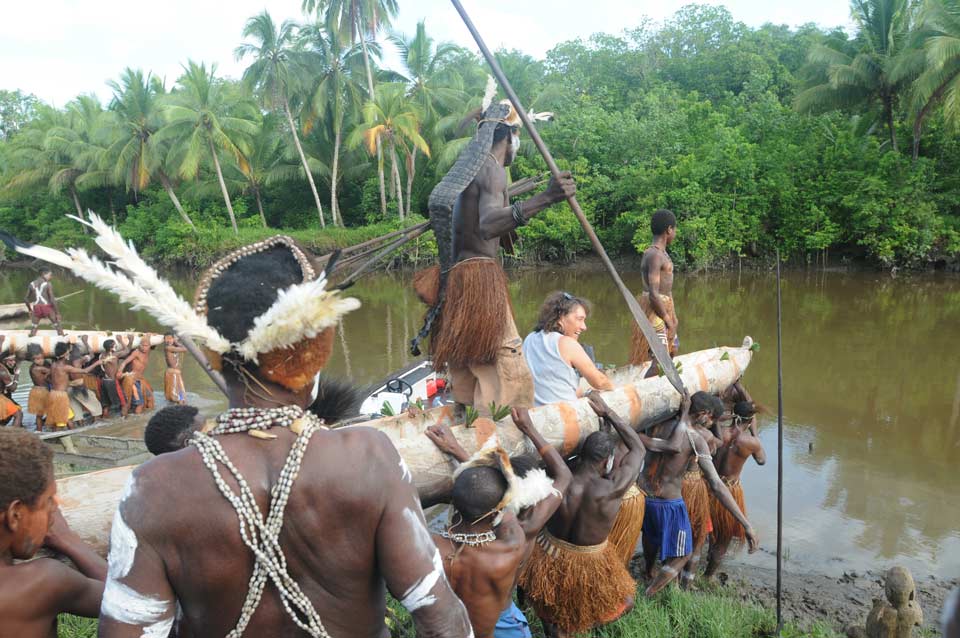
Sue is guest of honour at a boat-launching festival in a small hamlet in Asmat Regency, Papua Province, Indonesia
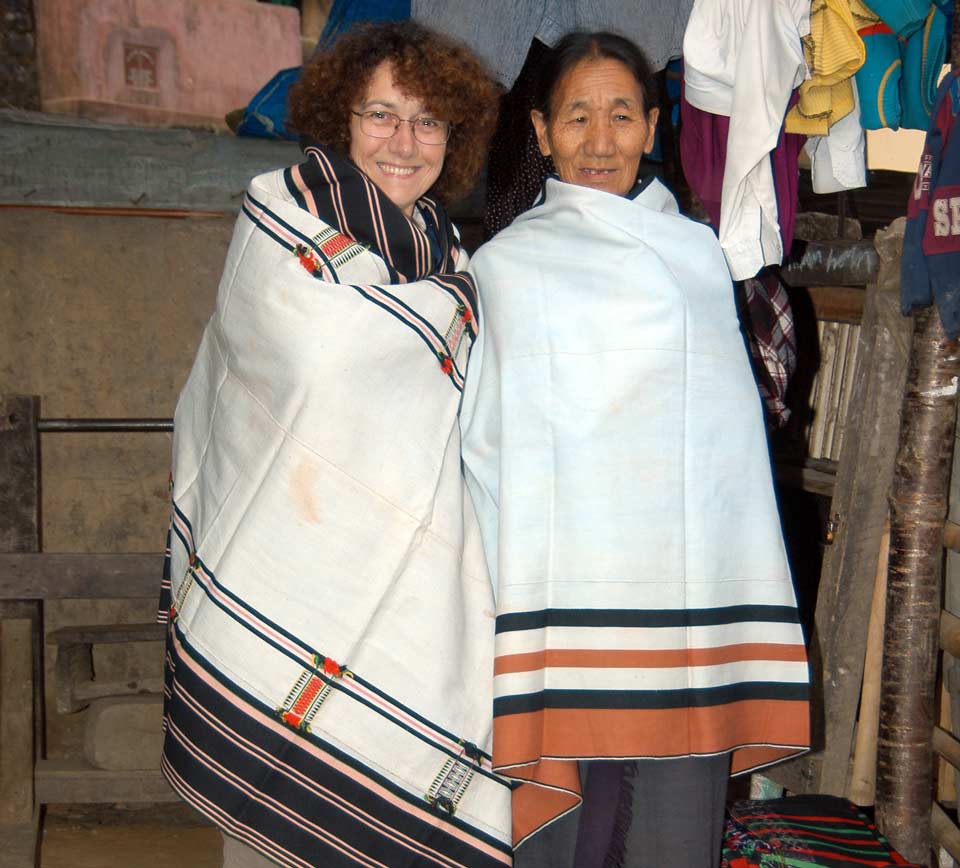
Sue keeping warm in the highlands of Nagaland, northeast India
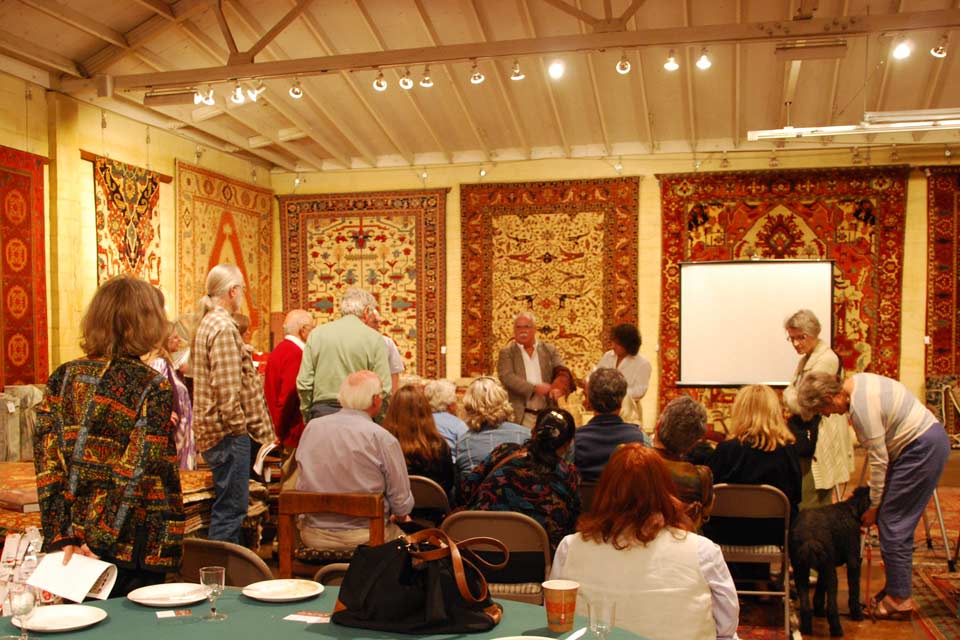
Lecturing at the Oriental Rug and Textile Society, Minasian Oriental Rug Gallery, Evanston, Chicago
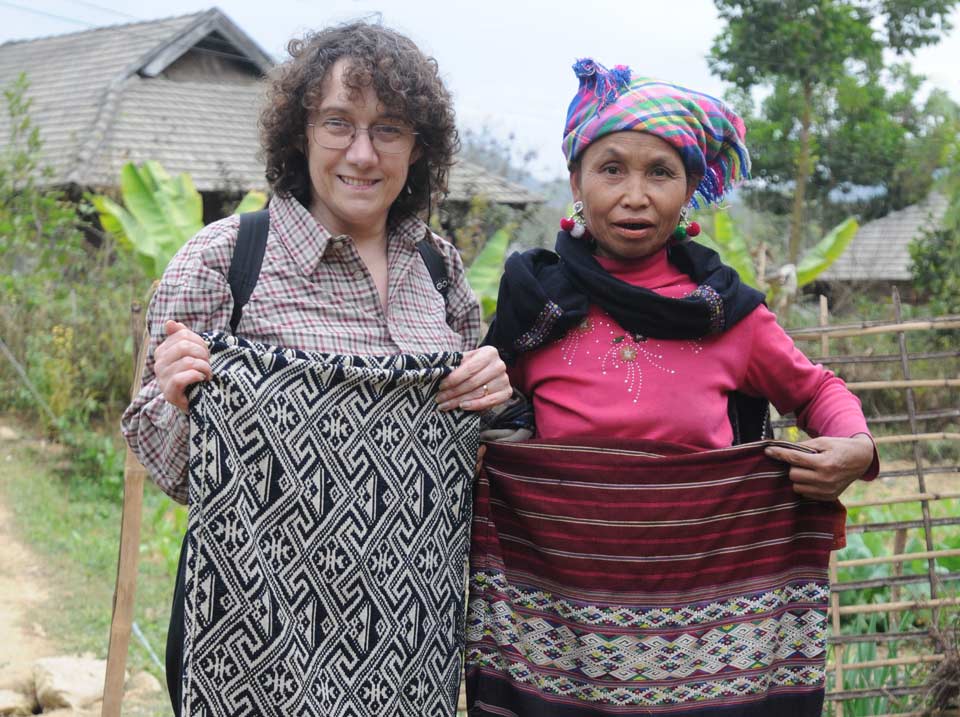
Looking at textiles with a Tai-Lü weaver in Vietnam
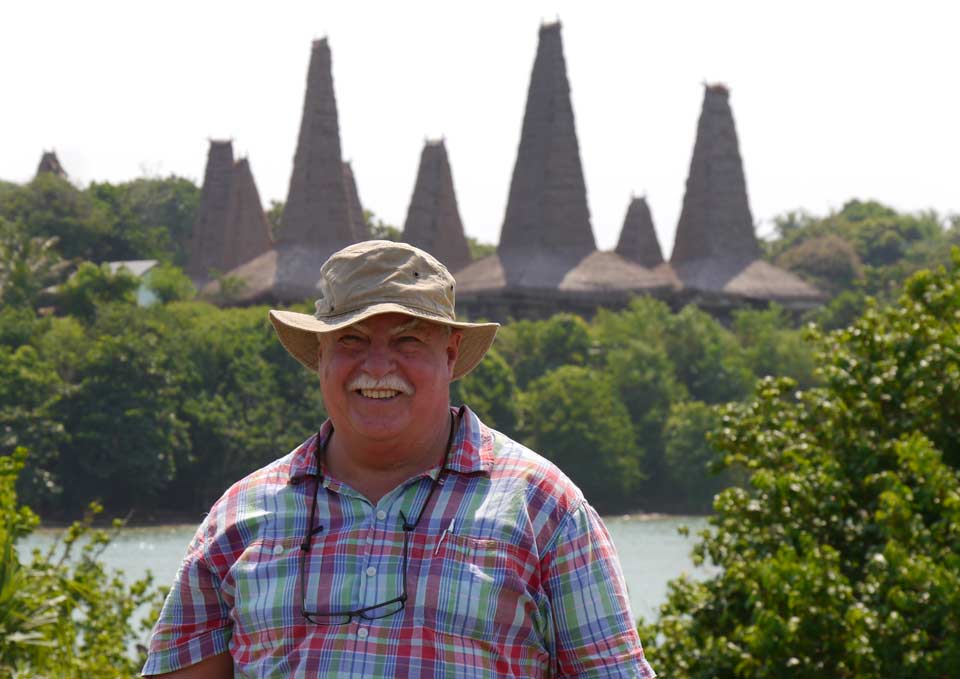
At Ratenggaro, Kodi, West Sumba, Indonesia
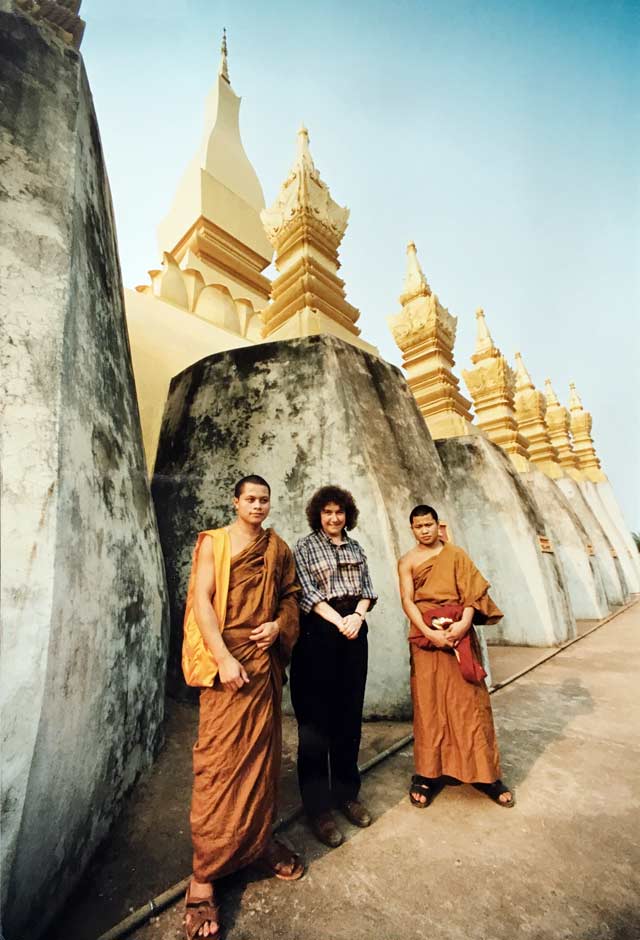
Sue with Buddhist monks at Pha That Luang, Vientiane, Laos
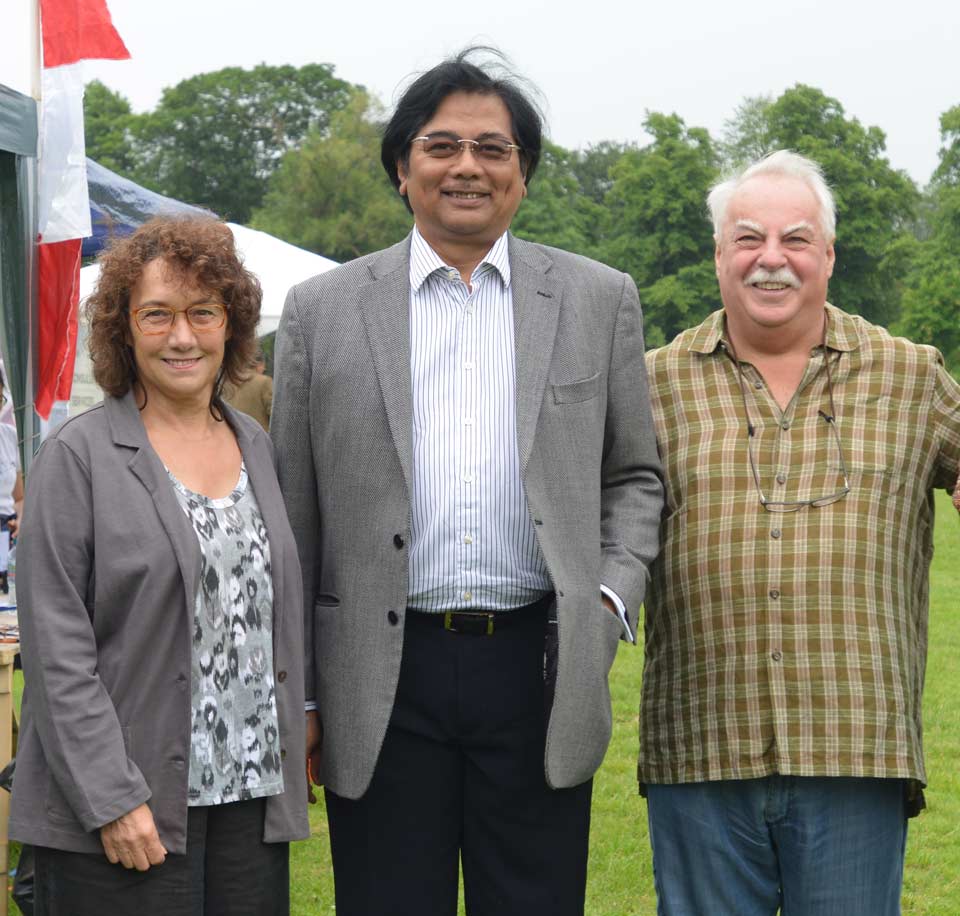
With His Excellency Teuku Mohammad Hamzah Thayeb, former Indonesian Ambassador to the United Kingdom
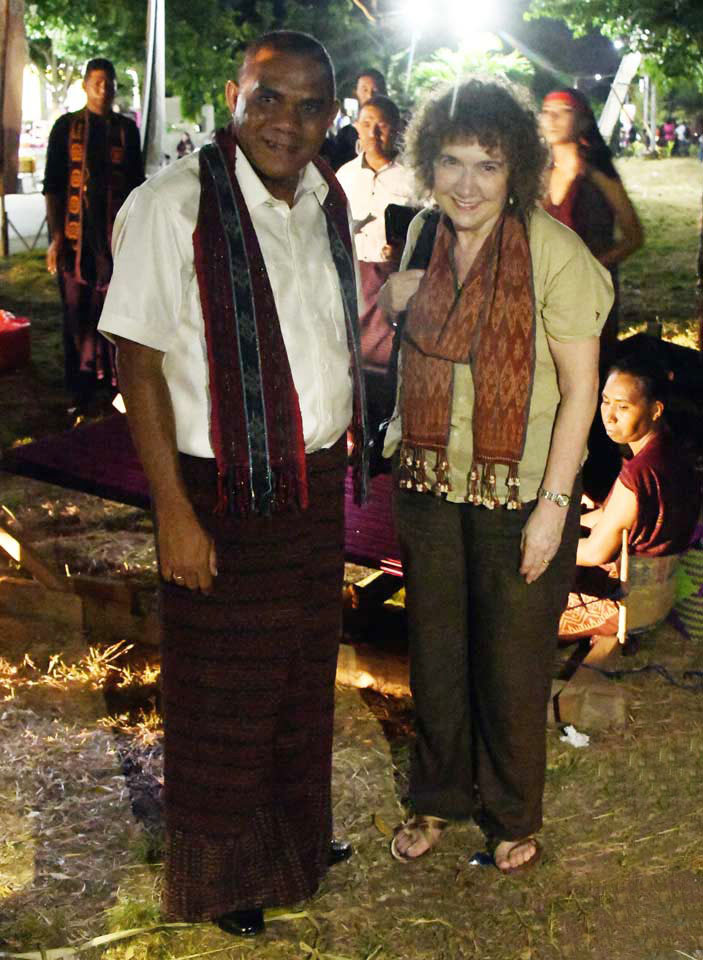
As guests of Bupati Antonius Hadjon, the Regent or head of East Flores Regency, at the huge Festival of Tenun Ikat, Larantuka, East Flores Regency in 2019
